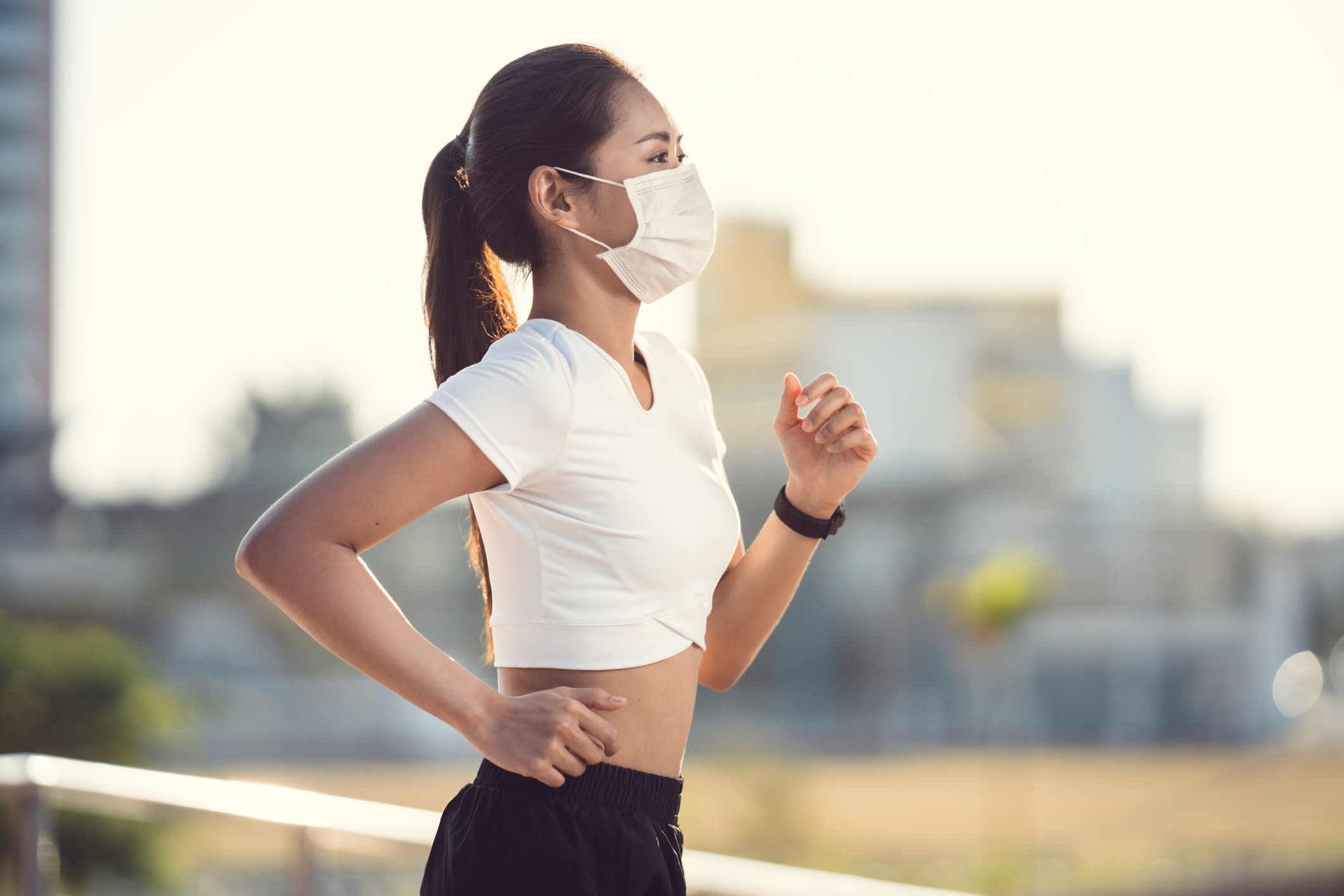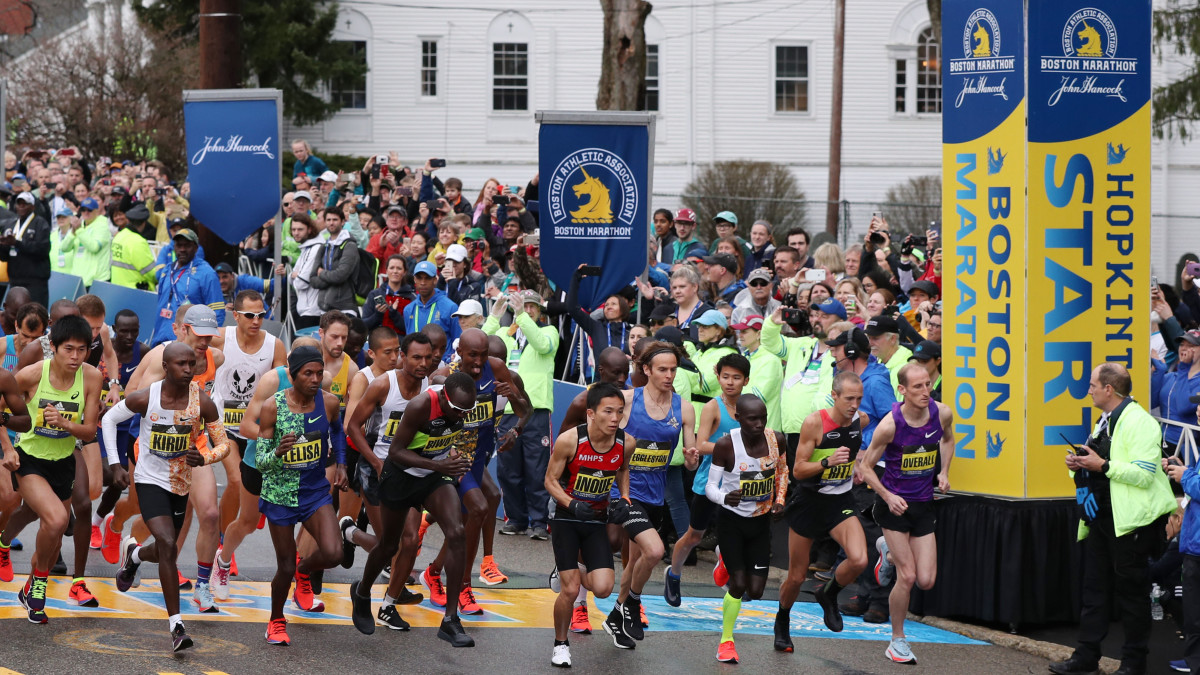

Featured
Can You Exercise When You Have Covid
Modified: January 2, 2024
Discover if it is safe and beneficial to exercise when you have Covid. Featured article provides expert insights and guidelines.
Introduction
With the ongoing COVID-19 pandemic, many individuals are prioritizing their health and well-being more than ever before. Regular exercise has always been a crucial aspect of maintaining overall health, but can it still be practiced when someone is infected with COVID-19?
COVID-19 is a highly contagious respiratory illness caused by the novel coronavirus. It has affected millions of people worldwide and has brought about significant changes in the way we live our lives. As the virus continues to spread, it is important to understand how exercise can play a role in managing COVID-19 symptoms and promoting recovery.
Exercise is known to have a wide range of physical and mental health benefits, such as strengthening the immune system, reducing stress, improving cardiovascular health, and boosting mood. However, when it comes to exercising while having COVID-19, certain precautions need to be taken to ensure the safety of both the individual and others around them.
In this article, we will explore the importance of exercise, guidelines for exercising when infected with COVID-19, the types of exercises that can be considered, and the precautions that should be taken. We will also discuss the benefits of exercising with COVID-19 and when it is necessary to avoid exercise altogether.
It’s important to emphasize that the information provided here is not intended as medical advice. Always consult with a healthcare professional or follow the guidelines provided by your country’s public health authorities.
Understanding COVID-19
Before delving into the topic of exercising with COVID-19, it is essential to have a basic understanding of the virus itself. COVID-19 is caused by the severe acute respiratory syndrome coronavirus 2 (SARS-CoV-2). It primarily spreads through respiratory droplets when an infected individual coughs, sneezes, talks, or breathes out. It can also spread by touching surfaces contaminated with the virus and then touching the face.
The most common symptoms of COVID-19 include fever, cough, shortness of breath, fatigue, muscle or body aches, headache, sore throat, loss of taste or smell, congestion, and runny nose. In some cases, the symptoms can range from mild to severe, potentially leading to pneumonia, respiratory failure, or other complications.
It’s crucial to note that COVID-19 affects individuals differently. Some may experience mild symptoms or even be asymptomatic, while others may develop severe symptoms. It is estimated that it takes an average of 5-7 days from exposure to the onset of symptoms, but it can range from 2 days to 14 days.
The impact of COVID-19 on individuals varies based on several factors, including age, underlying health conditions, and immune system strength. Older adults and individuals with pre-existing medical conditions such as diabetes, heart disease, or compromised immune systems are at a higher risk of severe complications.
Testing, contact tracing, and strict adherence to preventive measures such as wearing masks, practicing social distancing, and frequent handwashing are essential to control the spread of COVID-19.
Now that we have a better understanding of the virus, let’s explore how exercise can play a role in managing COVID-19 symptoms and promoting recovery.
The Importance of Exercise
Exercise has long been recognized as an essential component of a healthy lifestyle. It offers numerous physical and mental health benefits that can help individuals cope with various illnesses, including COVID-19.
Regular exercise can improve cardiovascular health, strengthen the immune system, and reduce the risk of chronic diseases. It has also been shown to enhance mood, reduce stress, and improve overall mental well-being. During a pandemic, when stress levels may be higher, engaging in physical activity can provide a much-needed release and an opportunity for self-care.
For individuals infected with COVID-19, exercise can help manage certain symptoms and aid in recovery. Mild to moderate exercise has been shown to improve lung capacity and respiratory function, which can be especially beneficial for individuals experiencing respiratory symptoms. It can also help prevent muscle loss and promote overall strength and mobility.
Furthermore, exercise stimulates the production of endorphins, often referred to as the “feel-good” hormones. These chemicals help boost mood and alleviate depressive symptoms, which can be particularly beneficial during times of increased stress and anxiety.
Some studies suggest that regular physical activity may also have a positive impact on the immune system. While more research is needed specific to COVID-19, exercise is known to improve immune function by increasing the circulation of cells and antibodies throughout the body.
It’s important to note that exercise alone cannot prevent or cure COVID-19. It should be practiced in conjunction with other preventive measures, such as wearing masks, practicing good hand hygiene, and following public health guidelines.
In the next section, we will explore exercise guidelines specifically tailored for individuals infected with COVID-19 to ensure a safe and effective approach to physical activity.
Exercise Guidelines for COVID-19 Patients
When it comes to exercising with COVID-19, it is crucial to prioritize safety and consider the individual’s current health status. It is recommended that individuals infected with COVID-19 follow these exercise guidelines:
- Consult with a healthcare professional: Before starting or resuming an exercise routine, it is important to consult with a healthcare professional, especially if the symptoms are severe or if the individual has underlying health conditions.
- Monitor symptoms: Pay close attention to symptoms and avoid exercise if experiencing severe symptoms such as difficulty breathing, chest pain, and extreme fatigue. It is important to listen to the body and rest when necessary.
- Start slow and gradually increase intensity: Begin with low-intensity exercises such as gentle stretching or light walking. As the symptoms improve and energy levels increase, gradually increase the intensity and duration of the workouts.
- Choose low-impact exercises: Opt for activities that are low-impact and do not put excessive strain on the body. This can include activities such as yoga, gentle aerobics, stationary cycling, or swimming if permitted and safe to do so.
- Focus on deep breathing exercises: Incorporate deep breathing exercises, such as diaphragmatic breathing or pursed-lip breathing, to improve lung function and respiratory capacity.
- Practice good hygiene: Prioritize good hygiene practices, including proper handwashing before and after exercise, wiping down exercise equipment before and after use, and avoiding crowded public spaces for workouts.
- Stay hydrated: Drink plenty of fluids before, during, and after exercise to stay hydrated and support overall health.
- Monitor heart rate and exertion: Pay attention to heart rate and exertion levels during exercise. It is recommended to aim for a moderate level of intensity and avoid pushing too hard.
- Rest and recover: Allow for adequate rest and recovery between exercise sessions. This will help prevent overexertion and promote healing.
Remember, these guidelines serve as general recommendations and may vary depending on individual circumstances. It is always advisable to consult with a healthcare professional for personalized guidance.
In the next section, we will explore different types of exercises that can be considered when exercising with COVID-19.
Types of Exercise to Consider
When exercising with COVID-19, it’s important to choose activities that are safe, gentle, and suitable for your current health condition. Here are some types of exercises to consider:
- Light aerobic exercises: Engaging in light aerobic exercises, such as brisk walking, gentle jogging, or low-impact aerobics, can help increase heart rate, improve cardiovascular health, and boost mood. Start with shorter durations and gradually increase the time as you build stamina.
- Stretching and flexibility exercises: Stretching exercises improve flexibility and mobility and help alleviate muscle tension. Incorporate static stretches or try gentle yoga poses that focus on stretching and relaxation.
- Breathing exercises: Deep breathing exercises, such as diaphragmatic breathing or pursed-lip breathing, can improve lung capacity and strengthen the respiratory muscles. These exercises help maximize oxygen intake and support overall respiratory function.
- Balance and stability exercises: Incorporating balance and stability exercises, such as standing on one leg or using a balance board, can help maintain and improve coordination and stability. These exercises can be modified to suit individual abilities and can be done at home.
- Resistance training: If you have access to light weights or resistance bands, incorporating gentle strength training exercises can help maintain muscle tone and strength. Focus on exercises that target major muscle groups, such as squats, lunges, and bicep curls, using light resistance.
- Mind-body exercises: Mind-body exercises, like tai chi and qigong, can help promote relaxation, reduce stress, and improve overall well-being. These exercises combine gentle movements with deep breathing and focus on mind-body connection.
- Water-based exercises: If you have access to a safe and clean swimming pool, water-based exercises can be beneficial. Water provides resistance while reducing stress on the joints, making it a low-impact option. Water aerobics or swimming laps at a leisurely pace can be considered.
- Virtual workout classes: If going to a gym or attending in-person classes is not possible or recommended, consider participating in virtual workout classes. There are numerous online platforms and apps that offer guided exercise programs tailored to different needs and abilities.
Remember, the type and intensity of exercise should be based on individual comfort levels and current health status. Start slowly, listen to your body, and modify exercises as needed.
In the next section, we will discuss important precautions to take when exercising with COVID-19 to ensure safety for yourself and others.
Precautions to Take
When exercising with COVID-19, it is crucial to take precautions to protect yourself and others. Consider the following measures:
- Isolate and follow guidelines: If you have tested positive for COVID-19 or are experiencing symptoms, it is important to isolate yourself and follow the guidelines provided by your local health authorities. Avoid public places and limit close contact with others, including during exercise.
- Exercise in a well-ventilated area: Choose an open, well-ventilated space for exercise to minimize the risk of viral transmission. If exercising indoors, ensure there is adequate airflow by opening windows or using ventilation systems.
- Wear a mask when appropriate: If possible, wear a mask during exercise, especially if you are in close proximity to others or in an indoor setting. However, it is important to consider your comfort level and ability to breathe properly while wearing a mask during physical activity.
- Maintain physical distance: Follow the recommended physical distancing guidelines and keep a safe distance from others, especially when exercising in public. Avoid overcrowded areas and choose less crowded times for outdoor activities.
- Clean and sanitize equipment: If using exercise equipment, make sure to clean and sanitize it before and after use. Use disinfectant wipes or spray to wipe down surfaces to reduce the risk of contamination.
- Practice good hand hygiene: Wash your hands thoroughly with soap and water for at least 20 seconds before and after exercising. If soap and water are not available, use hand sanitizer with at least 60% alcohol content.
- Stay hydrated: Remember to drink plenty of water before, during, and after exercise to stay hydrated. Bring your own water bottle and avoid using shared water fountains.
- Listen to your body: Pay attention to how your body feels during exercise. If you experience worsening symptoms, fatigue, or difficulty breathing, stop exercising and seek medical attention if necessary.
- Follow healthcare professional’s advice: If you are under the care of a healthcare professional, follow their advice and recommendations regarding exercise and physical activity. They can provide personalized guidance based on your specific condition.
These precautions are meant to minimize the risk of spreading the virus and protect both yourself and others. It is important to stay informed about the latest guidelines and recommendations from reputable sources, such as the World Health Organization (WHO) and the Centers for Disease Control and Prevention (CDC).
In the next section, we will discuss situations when it is necessary to avoid exercise altogether while dealing with COVID-19.
When to Avoid Exercise
While exercise can be beneficial for many individuals with COVID-19, there are certain situations when it is necessary to avoid exercise altogether. Consider the following scenarios:
- Severe symptoms: If you experience severe symptoms such as difficulty breathing, chest pain, or extreme fatigue, it is important to avoid exercise and seek medical attention immediately. Exercising in these cases can put additional stress on the body and potentially worsen the condition.
- High fever: If you have a high fever (typically above 100.4°F or 38°C), it is advisable to refrain from exercising until the fever subsides. Exercising with a high fever can lead to dehydration, increased body temperature, and potential complications.
- Doctor’s recommendation: If your healthcare professional advises against exercising due to the severity of your symptoms or other health concerns, it is important to follow their guidance. They have the expertise to evaluate your condition and provide the appropriate recommendations.
- Significant muscle or joint pain: If you experience significant muscle or joint pain that worsens with movement, it may be necessary to avoid exercise until the pain subsides. Pushing through pain can lead to further injury or aggravate existing conditions.
- Excessive fatigue: If you feel excessively tired or fatigued, it is important to prioritize rest and allow your body to recover. Pushing through extreme fatigue can hinder the healing process and prolong recovery time.
- Unstable vital signs: If your vital signs, such as heart rate, blood pressure, or oxygen saturation, are unstable or outside of the normal range, it is essential to rest and monitor your condition. Exercising in such situations can put undue stress on the body and potentially worsen your health.
- Underlying health conditions: If you have pre-existing health conditions that could be worsened by exercise or if you are unsure about the suitability of exercise for your specific condition, consult with your healthcare professional for personalized guidance.
It is essential to listen to your body and prioritize your overall well-being. If there are any concerns or uncertainties about exercising with COVID-19, it is always advisable to consult with a healthcare professional for guidance and support.
In the next section, we will explore the potential benefits of exercising with COVID-19.
Benefits of Exercising With COVID-19
While exercising with COVID-19 may not be suitable for everyone, for those who are able to do so safely and within their healthcare professional’s guidelines, there can be potential benefits. Here are some of the benefits of exercising with COVID-19:
- Improved respiratory function: Engaging in mild to moderate aerobic exercises and deep breathing exercises can help improve lung capacity and respiratory function. This can be particularly beneficial for individuals experiencing respiratory symptoms such as shortness of breath.
- Mood enhancement: Exercise is known to stimulate the release of endorphins, neurotransmitters that elevate mood and reduce stress levels. Engaging in physical activity can provide a sense of accomplishment and positivity, helping individuals cope with the challenges of COVID-19.
- Stress reduction: Regular exercise can be an effective stress management tool. It helps reduce the production of stress hormones and promotes relaxation. As the pandemic brings about increased stress and anxiety, exercise can serve as a healthy outlet for stress relief and emotional well-being.
- Maintained muscle tone and strength: COVID-19-related illness and periods of rest can lead to muscle wasting and loss of strength. Light resistance training exercises and targeted strength exercises can help maintain muscle mass, prevent muscle loss, and preserve overall strength and mobility.
- Support for immune function: While more research is needed specific to COVID-19, regular exercise has been shown to have a positive impact on immune function. It can increase the circulation of antibodies and immune cells throughout the body, potentially helping the immune system combat infections.
- Energy boost: Exercise can provide a natural energy boost by increasing blood flow and oxygen delivery to the muscles and other tissues. For individuals dealing with the fatigue that often accompanies COVID-19, gentle exercise can help improve energy levels and reduce feelings of lethargy.
- Quality sleep: Regular physical activity can contribute to better sleep quality. Adequate, restful sleep is vital for overall health and well-being, including immune function and recovery from illness.
It is important to note that the potential benefits of exercise with COVID-19 may vary from person to person, and individual considerations and precautions should always be taken into account.
In the final section, we will wrap up the article and summarize the key points discussed.
Conclusion
Exercising with COVID-19 can be a complex matter that requires careful consideration and adherence to guidelines. While exercise can have numerous physical and mental health benefits, it is essential to prioritize the safety of both yourself and others.
Understanding the nature of COVID-19, the importance of exercise, and the precautions to take are key in navigating physical activity during this challenging time. Consulting with a healthcare professional and following their recommendations is crucial for personalized guidance.
When exercising with COVID-19, starting slowly and gradually increasing the intensity, choosing appropriate exercises, and practicing good hygiene are essential. It is also important to listen to your body, rest when necessary, and monitor your symptoms closely.
Although exercising with COVID-19 can have potential benefits such as improved respiratory function, mood enhancement, and maintenance of muscle tone, it is not suitable for everyone. Severe symptoms, high fever, and unstable vital signs are indicators to refrain from exercise.
Always prioritize your overall well-being and consult with a healthcare professional if you have any concerns or uncertainties regarding exercising with COVID-19.
Remember, the information provided in this article is not a substitute for medical advice. It is important to rely on reputable sources and follow the guidelines provided by your local health authorities.
By incorporating exercise into your routine with caution and consideration, you can support your physical and mental health while navigating the challenges of COVID-19.









